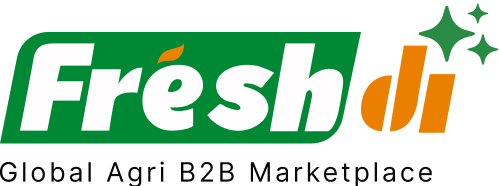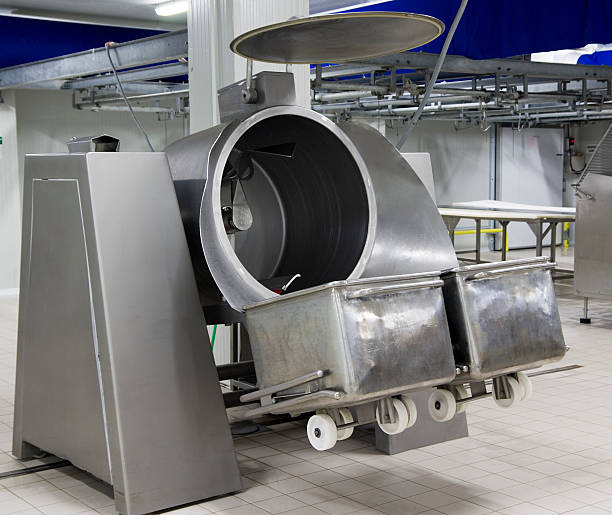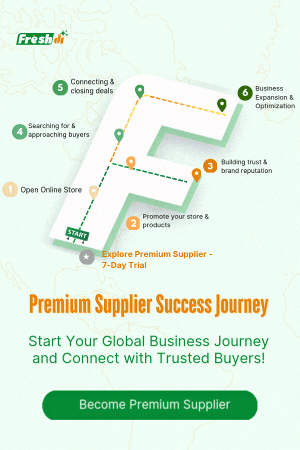Introduction – Current State of Play: The Soft Drinks Sector in Philippines
The soft drinks industry in the Philippines is experiencing a whirlwind of changes—and if you’re sourcing from or selling into this market, you’re going to want to buckle up.
First off, there’s been a sugar shortage shaking things up. Major soda players like Coca-Cola Beverages Philippines Inc. and Pepsi-Cola Products Philippines Inc. are facing supply issues due to a dip in domestic sugar production. Why? Well, remember Typhoon Rai (Odette) back in 2021? It battered Negros, the country’s sugarcane heartland, and the effects are still rippling through the supply chain.
The Sugar Regulatory Administration (SRA) is trying to stabilize things by exploring more sugar imports. But there’s pushback—sugar producers want transparency from the soda giants on how much sugar they actually need. It’s a tug-of-war between stabilizing prices and protecting local producers. (philstar.com)
Meanwhile, the market itself is growing. Valued at $2.8 billion in 2024, it’s expected to hit $4.0 billion by 2033. That’s a solid 3.4% CAGR. What’s fueling this? People want healthier options—less sugar, more function. Think probiotics, energy boosts, and natural ingredients. (businessreportmenafn.wordpress.com)
Throw in global trade volatility, tariff shifts, weather disruptions, and government regulations like the sugar tax, and you’ve got a market that demands agility. Businesses need to stay sharp, adapt fast, and make decisions based on real-time info. That’s where platforms like Freshdi come in, offering live supplier data, RFQ trends, and verified leads.
Deep Dive – Breaking News: Critical Updates & Their Effects
Let’s zoom in on what’s happening right now.
Yes, the sugar shortage is still the elephant in the room. While the SRA is managing imports, manufacturers are juggling the higher costs of premium refined sugar. This directly translates to production delays and price hikes for sugary beverages.
On the flip side, there’s a silver lining: innovation. Beverage makers are leveraging this moment to pivot—launching sugar-free colas, herbal mixes, and vitamin-packed drinks. This shift isn’t just reactive; it’s strategic.
Also, the industry is embracing digital transformation. From e-commerce platforms to real-time logistics, companies are investing in tech to streamline operations and reduce dependency on volatile global supply chains.
Top 6 Verified Soft Drinks Suppliers in Philippines – Adapting to Today’s Market
These suppliers have been vetted for export readiness, responsiveness to changing conditions, and strong performance on the Freshdi platform:
-
Jennifer C. Pacomios
Known for quality and consistency, Jennifer C. Pacomios supplies a range of soft drinks catering to both local and export markets. Her operations have adapted well to sugar supply challenges by diversifying sourcing. -
Lionheart Farms
A sustainability-focused producer, Lionheart Farms leverages farm-to-bottle processing to create natural and functional beverages. Their strong local sourcing model reduces reliance on volatile imports. -
Nonilon M. Robles
This supplier has a reputation for reliability, particularly in meeting custom RFQs for niche beverage formulations. Their facility certifications also make them attractive to international buyers. -
Skyfoods
Skyfoods stands out with a broad product portfolio, including flavored sodas and low-calorie options. They’ve recently tapped into the e-commerce boom, expanding reach across Southeast Asia. -
Phil Korea Bukang Co Inc
A hybrid local-international supplier, they offer K-style beverages adapted for the Philippine market. Their agility in reformulating products in response to sugar tax regulations has made them a go-to for compliant sourcing. -
Joren Alutaya
Specializing in organic soft drinks, Joren Alutaya is gaining traction for offering healthier alternatives. Their products align with the growing consumer demand for clean-label drinks.
Dynamic Ranking Note
Want to stay ahead of the curve? Platforms like Freshdi offer dynamic updates on “Top Suppliers of the Month” based on performance metrics, buyer feedback, and RFQ activity—so you’re always in the know.
Market Navigation – Strategic Responses to The Current Soft Drinks Landscape in Philippines
The situation isn’t static. It’s a moving target. So how should businesses respond?
Opportunities to Seize
1. Go Health-First
Consumers are ditching sugar-laden drinks for beverages that do more—hydration, energy, immunity. Suppliers who innovate here (think: collagen-infused soda or kombucha with a twist) are winning.
2. Ride the E-Commerce Wave
Online retail is booming. If you’re not selling on Lazada, Shopee, or through your own D2C site, you’re already behind. This shift is especially true among Millennials and Gen Z who prefer digital-first purchases.
3. Sustainable Packaging is a Differentiator
Eco-conscious buyers notice the little things. Biodegradable bottles, minimalist labels, and even refillable stations are more than trends—they’re becoming expectations.
Challenges to Brace For
1. Regulatory Red Tape
The Sugar-Sweetened Beverage (SSB) Tax under the TRAIN Law is real. It’s pushing up prices and forcing product reformulation. If your product doesn’t fit the criteria, it’s going to be a tough sell.
2. Ingredient Volatility
Sugar shortages, packaging price hikes, and shipping delays can derail your timeline. Diversifying suppliers, especially through tools like Freshdi, is one way to insulate your business.
3. Intense Competition
With multinationals and local upstarts fighting for shelf space, the only way to stand out is through constant innovation and laser-focused branding.
Sourcing Strategies That Work
- Diversify or Die: Don’t put all your sugarcane in one basket. Work with multiple suppliers to avoid disruption.
- Go Local: Partnering with local producers not only supports the economy but also reduces transit time and price fluctuation.
- Get Freshdi-Connected: With Freshdi, you get real-time RFQ alerts, supplier insights, and dynamic rankings to make smarter sourcing decisions.
Short-Term Outlook: What to Expect in the Coming Months
- More Product Launches: Look out for unique flavor combinations and formats (e.g., functional carbonated drinks in cans).
- Digital-First Campaigns: Brands are leaning into TikTok, Instagram, and influencer tie-ins to drive awareness.
- Smarter Distribution: Collaborations with delivery apps and cloud kitchen chains will boost off-premise consumption.
Conclusion – Key Takeaways for Businesses in a Rapidly Evolving Market
In short, the Philippine soft drinks market is buzzing—sometimes sweet, sometimes sour. From sugar shortages to soaring demand for health-based beverages, this market is not for the faint-hearted.
But there’s opportunity in the chaos. Companies that are proactive—reformulating products, digitizing supply chains, and staying compliant—will thrive. Those who cling to old models? Not so much.
To win in this environment, you need more than just a good product. You need insights. You need speed. You need partners. That’s where platforms like Freshdi come in. Whether you’re looking for verified suppliers, RFQ trend reports, or real-time sourcing intelligence, Freshdi empowers buyers to make confident, data-driven decisions in a dynamic market.
Buyer Checklist for Navigating the 2025 Soft Drinks Market in the Philippines
✅ Are your suppliers diversified to handle sugar shortages?
✅ Are your products compliant with the Sugar-Sweetened Beverage tax?
✅ Have you explored health-focused product lines?
✅ Are you leveraging e-commerce for distribution?
✅ Are you using real-time platforms like Freshdi for market intelligence?
Future Outlook: What’s Next for Philippines Soft Drinks?
The next decade will see this market evolve into a hybrid model—where tradition meets innovation. Expect more plant-based drinks, AI-driven flavor development, and closed-loop sustainability systems. And if you’re sourcing from this region, staying plugged into platforms like Freshdi will be your competitive edge.
FAQs
1. What’s causing the sugar shortage in the Philippines?
It stems from a decline in local sugar production, largely due to Typhoon Rai’s impact on sugarcane farms in Negros. This has led to a critical supply gap for beverage manufacturers.
2. Is the soft drinks market in the Philippines growing?
Yes, it’s projected to grow from $2.8 billion in 2024 to $4.0 billion by 2033, driven by demand for healthier beverage options and expanding online retail channels.
3. How is the sugar tax affecting soft drink companies?
The Sugar-Sweetened Beverage (SSB) Tax increases operational costs and pressures companies to reformulate products to avoid higher taxes, prompting a shift to low- or no-sugar alternatives.
4. Why is Freshdi important for sourcing soft drinks in the Philippines?
Freshdi offers real-time supplier verification, RFQ trend analysis, and dynamic supplier rankings—making it easier for buyers to find reliable sources and adapt to fast-changing market conditions.
5. What types of soft drinks are trending in the Philippines right now?
Healthier options are in: think low-sugar sodas, functional beverages with vitamins, herbal infusions, and even probiotic sparkling drinks.
References
- philstar.com
- businessreportmenafn.wordpress.com
- koalagains.com
- joripress.com
- en.wikipedia.org
- imarcgroup.com
- Freshdi





